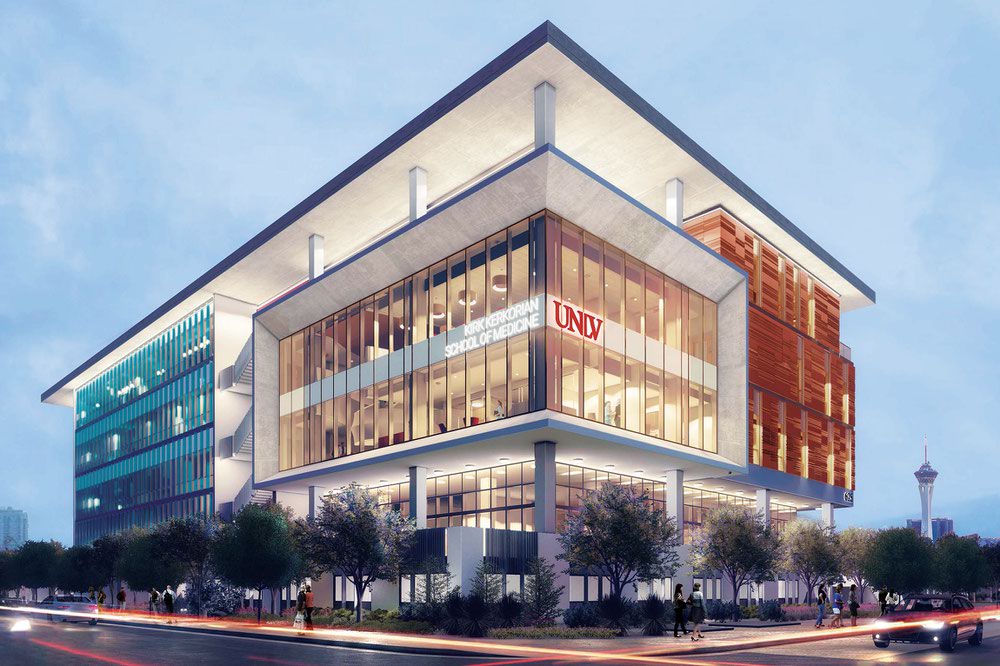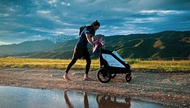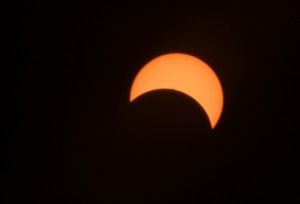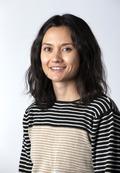Locals should start noticing changes in the Las Vegas Medical District soon.
Established by the City Council in 1997, the 674-acre area west of Downtown and I-15 is slated for renovations detailed in a $130 million infrastructure upgrade plan that was presented August 23 at City Hall to Gov. Steve Sisolak, members of the medical community, Downtown business owners, residents and developers.
“The medical district is very much part of the Downtown area, we just don’t know it yet,” Las Vegas Councilman Brian Knudsen said. “[We] in the [surrounding] neighborhoods call ourselves ‘Downtown adjacent.’ We don’t need to do that anymore. We’re going be able to walk to Downtown to spend money.”
Knudsen’s pitch to stakeholders was followed by a presentation from city staff outlining updates that will take place over the next two years, plus panel discussions with medical professionals and business representatives about how those updates will benefit area residents, businesses, and ultimately, the quality of care available in Southern Nevada.
As the councilman for Ward 1, Knudsen has been working for years to grow the medical district, which has $358 million of projects currently underway, according to the city’s director of community development.
Knudsen says the challenges he encountered when getting care for his son, who at one point had to stay in a local hospital for more than a month, drove him to develop a local medical district, and eventually, get more professionals to work and live in the state.
“[We have] great physicians, great nurses—but this system of care is really underdeveloped. The challenges that we faced in coordinating multiple specialists for my son became overwhelming. We ended up going to an out of state hospital,” he tells the Weekly, adding that he had the resources and access to do so. “A lot of our community really can’t do that.”
According to 2020 data from the American Association of Medical Colleges, Nevada ranks 45th among U.S. states in number of doctors, with 219 active physicians for every 100,000 residents.
Knudsen says taking his son to Johns Hopkins University in Baltimore and observing their model made him want to bring that level of care and medical infrastructure to local families. Creating an “academic medical community” is one key strategy, he says.
“It’s kind of shifting our current thinking from the Las Vegas Medical District to an academic medical district. And I think that [means] that it’s a place of learning, a place of teaching,” he says. “I kind of look at it as younger people—dental, medical, nursing students—[having] a much more prominent role in that area.”
Development of student housing and community amenities on Charleston Boulevard and in the medical district will “infill” the spaces between some of Las Vegas’ most historic neighborhoods, like the Scotch 80s enclosed by Rancho Drive and Oakey Boulevard.
“In addition to seeing apartment complexes in the area … you’ll see walkable streets and easier access to the Downtown core,” Knudsen says, referencing impending Charleston Boulevard interchange renovations, which will make it smoother for pedestrians to get from the medical district to the Arts District. Landscaped sidewalks and medians, improved access to storefronts and the Regional Transportation Commission’s Maryland Parkway bus rapid transit (BRT) project are all part of the plan.
The Kirk Kerkorian School of Medicine at UNLV is positioned as a central part of the academic medical community in the revamped district—a boon to the burgeoning school, which earned full accreditation in 2021. Adjacent to facilities like the county-run University Medical Center and the new Optum Care cancer center, UNLV’s medical school and other health institutions can expect to be a part of the mission to deliver better care to Southern Nevada patients, says School of Medicine Dean Marc Kahn.
“We’re creating an academic health center—a collection of the academic health science schools,” Kahn says. “It’s the schools, in conjunction with the hospitals and clinics in which we practice, [that would] really provide the best level of care for our community.”
With UNLV’s $150 million, 135,000 square-foot medical education building on Shadow Lane slated to open in October, Kahn says there’s potential to change the “paradigm of care” and break down barriers to access for people in the community. One of the first steps is launching more residency programs in the Valley.
“It’s not just having a medical school and medical school classes,” Kahn says, adding that residencies for many specialties and subspecialties are limited or not offered in Southern Nevada. “We really need residency spots to keep people here in the state.”
To help expand those opportunities, the Nevada Interim Finance Committee in August approved $30 million for the school of medicine to set up a new pathology lab and $40 million for an ambulatory care clinic, which will offer outpatient primary and specialty care including surgery, oncology and mental health services, along with a pharmacy, Kahn says.
“It’s going to be a one-stop shop, I hope, for people who need care on an outpatient basis,” he says of the ambulatory clinic, adding that the school intends to designate space in the pathology lab for “basic science research.”
Kahn says he also expects the pathology lab to improve test turnaround times for local patients. Rather than sending samples to Northern Nevada to be processed, the school’s lab “will allow people in Southern Nevada to get more timely access to results and, therefore, more timely diagnosis,” he says.
Kahn says he hopes the school, which has admitted 240 students (60 per year) since opening, will be able to increase its annual enrollment numbers to 90 in the next few years, pending approval from the accrediting body.
In response to Nevada’s shortage of medical professionals, admissions takes into account students’ likelihood to stay in Nevada. “Nearly all of our students are Nevada residents, and the few that aren’t are in neighboring states with close family or other ties to Nevada,” Kahn says.
Councilman Knudsen says he expects growing the academic medical community will yield better health outcomes for Nevadans. “We increase that chance that, when you meet with a physician, you’re not just meeting with one resident or one physician; you’re meeting with a team of people,” he says.
Click HERE to subscribe for free to the Weekly Fix, the digital edition of Las Vegas Weekly! Stay up to date with the latest on Las Vegas concerts, shows, restaurants, bars and more, sent directly to your inbox!




